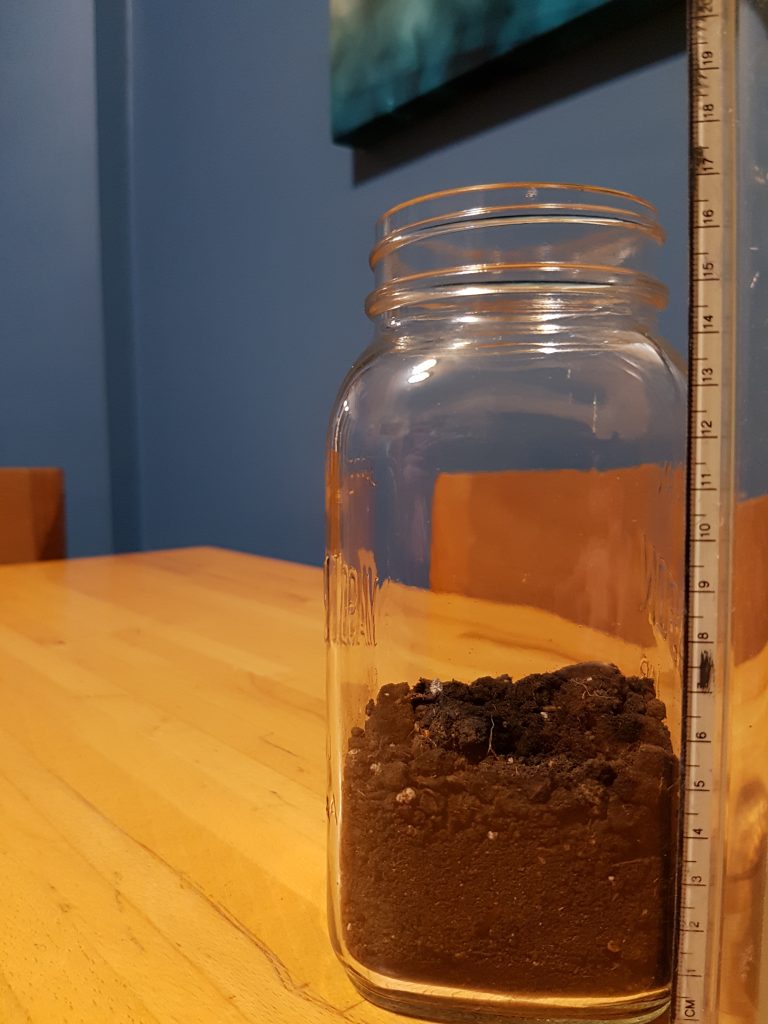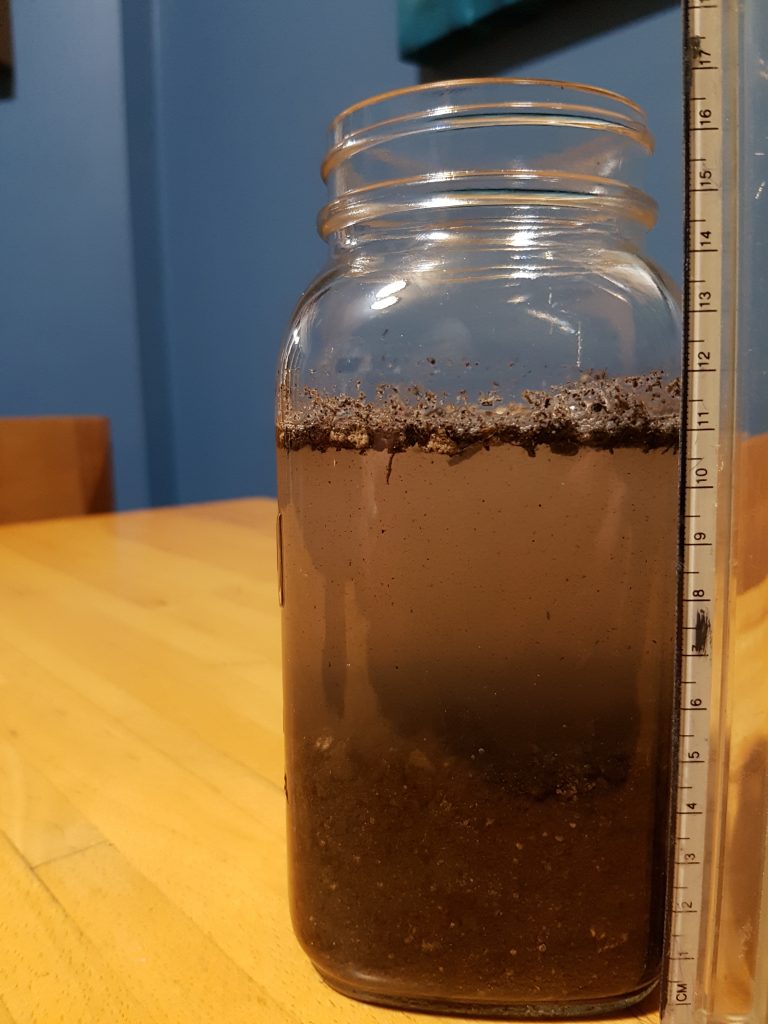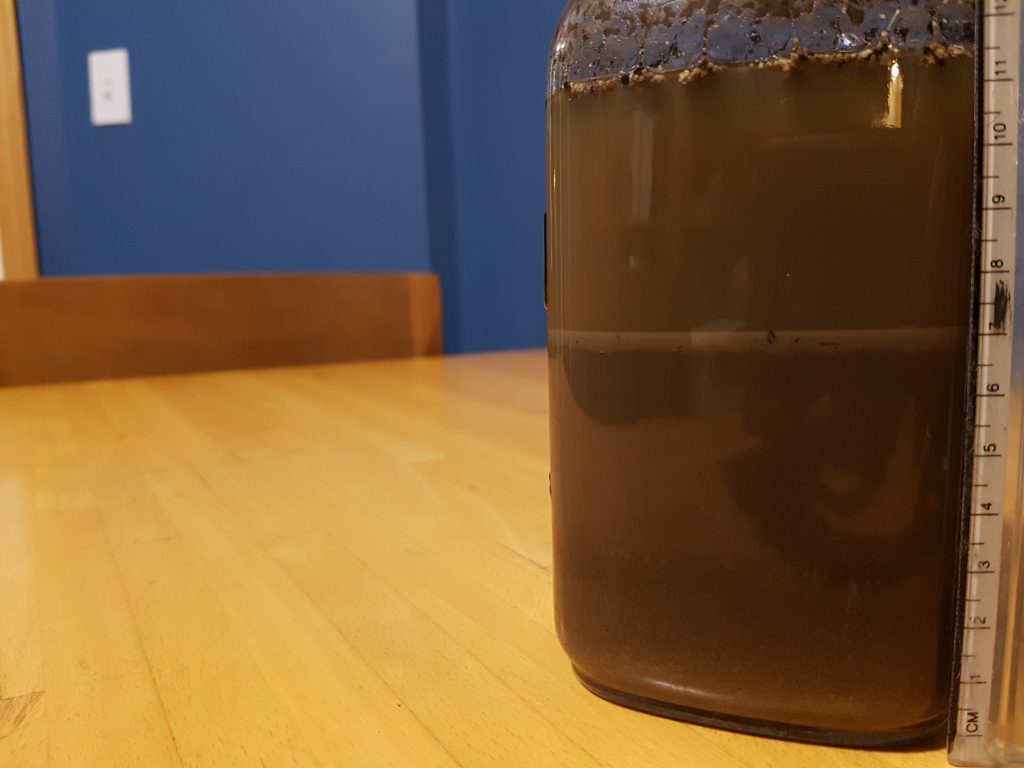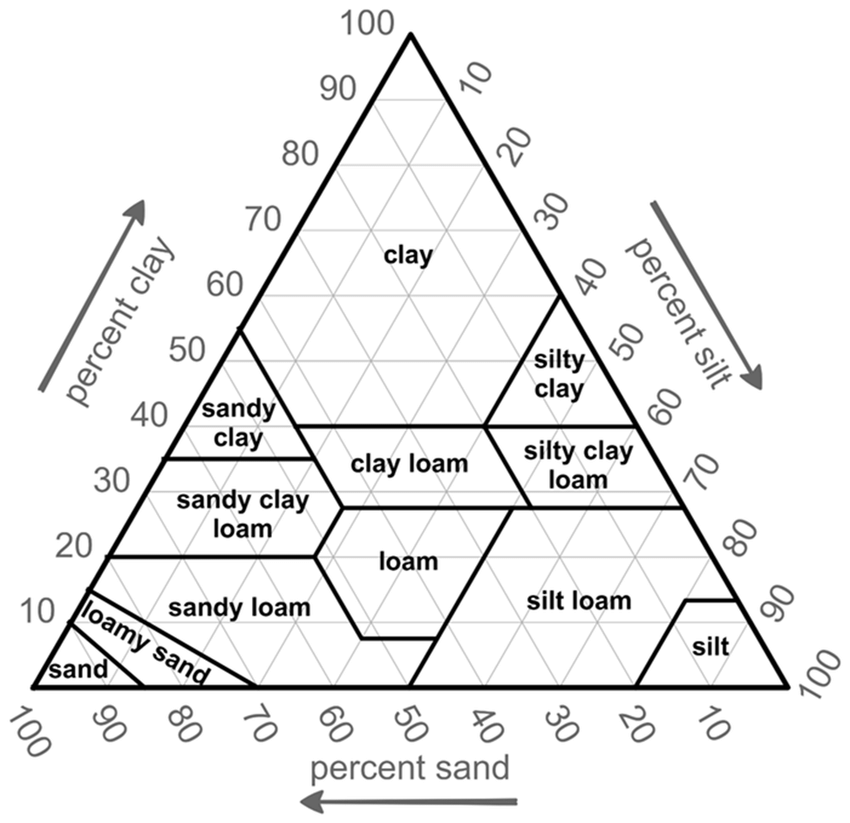This is a simple soil test you can do at home to see the kind of soil you are working with. A soil sedimentation test. Knowing what type of soil you are working with is beneficial when deciding what to do with a piece of land, or what plants to include in the garden.
The big thing to remember is that the soil is what the soil is. You can not change a sandy clay into a silty loam. What you can to is add organic matter and plants things that like sandy clays. Or maybe that is the section where sitting area is. Sandy clay could be a good base for a brick patio.
The test below is pretty straight forward. Fill a large mason jar approximately 1/3 with soil. Remove any organic matter first. This is the top bit of soil. The humus, decaying roots, that sort of thing. If you take a core sample it is easier to see the top layer. Any organic matter left in the sample will float. You want to get as much out as possible for visibility sake when reading the test
Once you have the soil in, fill the jar with water a shake it for literally 12 minutes! Then let it sit for at least 2 days. Once everything is settled then take your measurements, and figure out the percentage of the 3 elements Sand, Silt, and Clay.
PART 1
Sample Depth before addition of Water: 5 cm

Sample Depth including Water: 10.7 cm (Excluding floating organic layer)

The sample was shaken vigorously for 12 minutes and allowed to settle for 48 hours.

Findings:
Sand depth after 48 hours: 3 cm
Silt depth after 48 hours: 3.7 cm
Clay depth after 48 hours: 0.5 cm
Total soil depth after 48 hours: 7.2 cm
Sand: 3 / 7.2 = 41.7% – 42%
Silt: 3.7 / 7.2 = 51.4% – 51%
Clay: 0.5 / 7.2 = 6.9% – 7%
Using these percentages on the soil texture triangle, the soil texture classification is:
Silty Loam
Read my findings and see where your soil lands on the Soil Triangle below.

Ideally, somewhere in the loam area is the best soil for cultivation, but you can work with whatever soil type you have. The addition of organic matter will help any soil type boost it’s microbiology, air, and water holding capacities.
Soil Test Analysis:
Water Holding Capacity:
The amount of sand in this soil sample was 42%, which, together with the silt content of 51% would lead me to believe that the grain size, and pore sizes, that are available in this soil to hold and release water as required would be satisfactory for plant and microbial growth, however, it may be fast draining. The 7% clay helps to increase the surface area available for water to adhere to, but an increase in organic matter would help greatly.
Air Supply and Resistance to Compaction:
The higher amount of sand (42%) in the soil sample would create a resistance to compaction in the garden. The silt content being just slightly higher (51%) along with the small amount of clay (7%) means that compaction could occur if the area saw high traffic, but as a vegetable garden the resistance to compaction is good.
As a result of this, the air supply in the soil should be reasonably abundant for the beings in the soil that require it. The pores not occupied by water in the sand and silt, will be filled with air, and on the surface area of the clay. The addition of organic matter would increase both the resistance to compaction and air supply.
Nutrient Holding Capacity:
Although there was effort extended to limit the amount of organic matter in the soil sample for the sedimentation test, the remaining original sample from the garden was retained for comparison purposes. The Cation exchange capacity for a silt loam is approximately 27. What that means is that there are some nutrients being exchanged in the soil, but the potential is not there for plants to thrive. The amount of organic matter, effective organisms (taking in mind it is February), and humus in this soil and on the adjacent top soil is very low and therefore the plants may be able to survive in this soil, but their ability to thrive and protect themselves may not there.
Amount and Types of Nutrients:
Due to the lack of organic material, humus, and fungi found in the soil sample, there is reason to believe that there is very limited anion exchange happening in this soil. Also, since the clay content is only at 7%, there are not that many locations for cation exchanges either.
I would reason that there is Nitrogen, Iron, and Aluminum in abundance in this soil. Calcium, Magnesium, Manganese, Zinc, Copper and Cobalt, may be present in the soil but probably not at sufficient levels. I would also say that there would only be trace amounts of Potassium and Sodium, and no Phosphorous, Nitrates, Sulfates, or other anions to speak of. My reasons being, that there is no ground cover on this garden, and over the years that it has been a garden, there has never been any additions of organic matter to speak of. In the soil sample collected, there was a small, 7%, clay content. The clay particles, and organic matter are where the majority of nutrients are exchanged. The nutrients thought to be in abundance have the greater charge and therefore would hold on to the exchange site stronger. The weaker the charge, the easier those particles are bumped off the exchange site and washed away with the rain. With there being little to no organic matter/humus there is no place for the anions to hold onto in the soil and so they too would be washed away.
Contact me for more information about this home test.